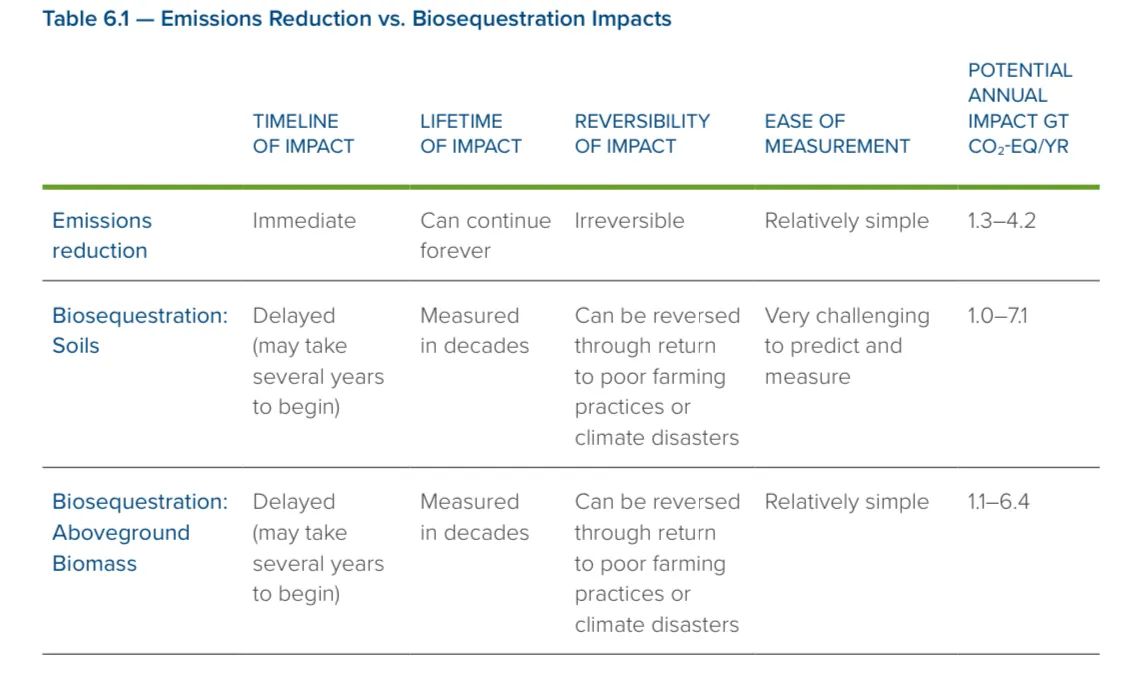Farming Our Way Out of the Climate Crisis (2020)
Changing Our Land Use, Agricultural Practices, and Food System Offers Numerous Opportunities to Reduce Greenhouse Gas Emissions, Sequester Atmospheric Carbon, and Help Address Climate Change
Project Drawdown
rating good
type concepts/climate concepts/sustainble-agriculture nonfiction article
1. Intro
- Agriculture → CO2 emissions, but also majority of CH4 and NO2 emissions
- Overall, agriculture/land use & electricity generation → equal global impact on climate change
- Can work to reduce emissions, and also offers potential as carbon sinks (regenerative agriculture)— note, carbon sinks are important, but slower effect & themselves threatened by changing environmental conditions
2. Climate impacts of food, agriculture, and land use (FALU)
- Clearing land & habitats → single biggest driver of biodiversity loss
- Dominant driver of water use (85% global water use)
- In order, climate change contributions from FALU = tropical land deforestation, methane emissions, nitrous oxide emissions
- Livestock production is main responsibility: land use for pasture, emissions from cattle, growth of crops for feed
3. Reducing greenhouse emissions from agriculture
- Conserving and restoring tropical rainforests
- New methods of animal agriculture
- Reduce methane emissions from ruminant livestock by: increasing food digestibility, feed additives, breeding & management, improved forage quality, tree fodder
- Manure management from all livestock
- New methods of rice cultivation (currently produce lots of methane)
- More prudent fertiliser use
- Nutrient management of synthetic fertilizers, compost/manure/nitrogen-fixing plants as nitrogen sources, crop-livestock integration
- Indirect strategies that lower demand: reduce food waste, promote plant-rich diets, intensify agriculture to be more productive/efficient
4. Creating carbon sinks on working land
- ~55% of our CO2 emissions already absorbed by forests and oceans
- Three main carbon pools: biomass carbon (above ground, like wood*, and below ground, like roots) detritus carbon, soil organic carbon (can influence by balance of input by farmers and losses by microbial degradation via farming practices)
- vast majority of all biomass carbon
- Rate of carbon sequestration by landscapes slows down (approaches saturation) on scale of 20-100 years
- Practices to promote sequestration: restoring forests and planting large areas of trees, using regenerative techniques to help crop & grazing lands accumulate more carbon, perennialize agriculture
- Agroforestry = key example
- Size of carbon sinks constrained by availability of other nutrients, water
- Overcoming methane emissions from cattle is still a challenge— limited capacity of land as "methane sink"
- New initiatives to also address increasing soil inorganic carbon (rocks and such)
5. How much carbon can we sequester and for how long?
- How much land can we use?
- Should not convert natural ecosystems to agricultural land to sequester carbon— the former are almost always more effective
- How much carbon can each hectare of land sequester?
- Ultimately, no one knows— need to be careful with how you estimate
- How long can agricultural landscapes hold carbon?
- In biomass, mainly limited by lifetime of trees
- For soil organic carbon, depends on practices being maintained → must be mindful of this!
6. Conclusion: We must change agriculture to help address climate change.
